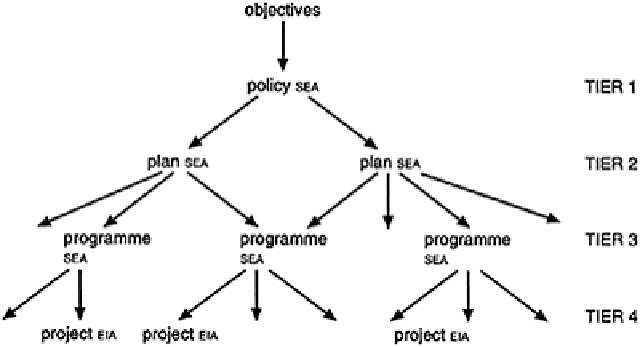Environmental Engineering Reference
In-Depth Information
in activities that have environmental impacts but are not development projects, for
instance privatization or different forms of land management.
12.2.2
The need for SEA
Various arguments have been put forward for a more strategic form of EIA, most of
which relate to
problems with the existing system of project
EIA. Project EIAs react to
development proposals rather than anticipating them, so they cannot steer development
towards environmentally robust areas or away from environmentally sensitive sites.
Figure 12.2
Tiers of SEA and EIA.
Project EIAs do not adequately consider the cumulative impacts
1
caused by several
projects, or even by one project's subcomponents or ancillary developments. For
instance, small individual mineral extraction operations may not need an EIA, but the
total impact of several of these projects may well be significant. Section 9.7 provides
another example. At present in most countries there is no legal requirement to prepare
comprehensive cumulative impact statements for projects of these types.
Project EIAs cannot consider the impacts of potentially damaging actions that are not
regulated through the approval of specific projects. Examples of such actions include
farm management practices, privatization and new technologies such as genetically
modified organisms. Project EIAs cannot fully address alternative types and locations for
developments, or the full range of possible mitigation measures, because these
alternatives will often be limited by choices made at an earlier, more strategic level. In
many cases a project will already have been planned quite specifically, and irreversible
decisions taken at the strategic level, by the time an EIA is carried out.
Project EIAs often have to be carried out very quickly because of financial constraints
and the timing of planning applications. This limits the amount of baseline data that can
be collected and the quality of analysis that can be undertaken. For instance, the planning
periods of many projects have required their ecological impact assessments to be carried
out in the winter months, when it is difficult to identify plants and when many animals

Search WWH ::

Custom Search